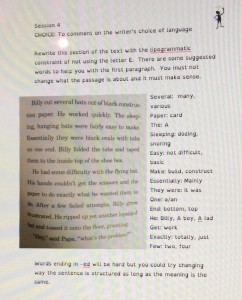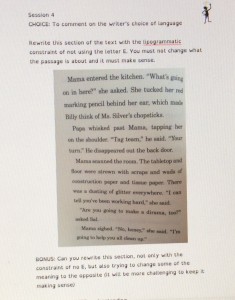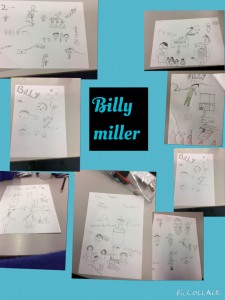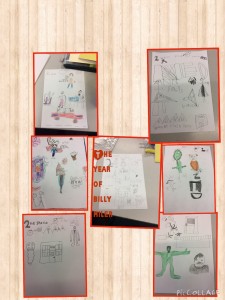I was first introduced to Lipograms when I was fortunate enough to travel to Manchester for a conference on ‘Developing writing in the Modern Classroom’ led by Alan Peat and Lee Parkinson. Over the last 18 months these two have had a significant impact on the teaching of a range of subjects through their innovative use of a combinationof high and low tech strategies to engage learners.
Lee Parkinson’s blog is inspirational for anyone wanting to use iPads and digital technology to raise standards. I have used many of his ideas over the last two school years to great effect and would highly recommend reading his blog.
http://mrparkinsonict.blogspot.co.uk
Alan Peat is a former teacher, now a writer and speaker who has written a number of books and successful apps to develop the use of literacy skills. I first came across him through Twitter and was introduced to his ‘Exciting Sentences’ which I introduced to my school and have been embedded in our practice for over a year. You can find out more about them from his website.
When I went to the conference I was introduced to the idea of Lipograms, something I’ll admit I had never heard of. A lipogram is a constraint that is used when writing and can often be developed as a task for deepening the challenge for higher attainers. The concept is very simple: a piece of writing is produced in which a particular letter is omitted. The example we worked on during the course (and I tried out with my class on return to school) was of Humpty Dumpty, rewritten without the use of the letter a.
So:
Humpty Dumpty sat on the wall
Humpty Dumpty had a great fall
All the King’s horses and all the King’s men
Couldn’t put Humpty together again
Became:
Humpty Dumpty rested on the structure
Humpty Dumpty tumbled off the structure
Every one of the King’s horses, followed by every one of the Kings’s men
Couldn’t return Humpty to his previous condition.
When I asked Alan for a suggestion of activity for the GRA, he suggested that we try writing lipograms for a section of the text, and to enhance this further, to read the version we have written alongside the printed original in order to see where changes have been made.
It has also been suggested that we video or audio record these reading and share them so that children can hear different accents/voices from around the world. This could be done using Write About This.
Here’s an example from Billy Miller that I will use with my class (differentiated to accommodate the ability of my students).
(The quality of these pictures is better if you click on them – I couldn’t open the file on my iPad as the font was different!)
Enjoy!
Viki Allen, Tollgate School, Eastbourne, UK






